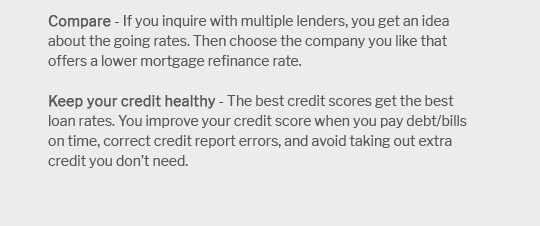 |
|||
 |
 |
 |
||
|---|---|---|
 |
||
 |
||
 |
||
 |
||
 |
 |
 |
 |
Understanding No Cost Refinance Options for HomeownersRefinancing your mortgage can be a smart move for many homeowners, especially when considering no cost refinance options. This strategy allows you to lower your interest rate without paying upfront fees. But what exactly does 'no cost' mean, and how can you ensure you're getting the best deal? Let's explore. What Are No Cost Refinance Options?No cost refinance options allow homeowners to refinance their mortgage without paying any upfront costs. Instead, the lender covers these expenses by slightly increasing your loan balance or adjusting your interest rate. This can be beneficial if you want to keep your cash reserves intact. Types of Costs Involved in Refinancing
In a no cost refinance, these fees are absorbed by the lender, making it an attractive option for many. How Does No Cost Refinancing Work?When opting for a no cost refinance, the lender might offer a slightly higher interest rate or increase the loan amount to cover the closing costs. For example, if you're exploring the best rate FHA streamline refinance, this method can be particularly appealing. Pros and Cons of No Cost RefinanceWhile this type of refinancing can be enticing, it's crucial to weigh its advantages and disadvantages.
Understanding these factors can help you decide if this option aligns with your financial goals. How to Choose the Best Refinance OptionWhen selecting a refinance option, it's essential to compare offers and consider your long-term financial objectives. If you're looking for the best rate to refinance home, ensure you're evaluating both immediate and future impacts. Tips for Homeowners
These steps can guide you toward making an informed decision. FAQWhat is a no cost refinance?A no cost refinance is a loan option where the lender covers upfront closing costs, often by adjusting the interest rate or loan balance. Are there any disadvantages to no cost refinancing?Yes, the main disadvantage is potentially higher long-term costs due to a slightly increased interest rate, which can lead to more interest paid over the loan's life. How can I find the best no cost refinance offer?To find the best offer, compare different lenders' terms, ensure you understand all costs involved, and consider how the refinance fits with your financial goals. Exploring no cost refinance options requires careful consideration and understanding. With the right approach, it can be a valuable tool for managing your mortgage effectively. https://www.sofi.com/learn/content/guide-to-no-closing-cost-refinance/
A no-closing-cost refinance means you get to take out a new mortgage without paying closing costs out of pocket or you accept a higher rate for the new loan. https://www.quickenloans.com/learn/refinance-without-closing-costs
A no-closing-cost refinance allows you to avoid paying closing costs upfront in a lump sum when closing on your refinance loan. https://www.bankrate.com/mortgages/low-cost-refinance/
1. Get the lowest possible rate - 2. Consider a no-closing-cost refinance - 3. Compare mortgage lenders - 4. Consult with your lender.
|
|---|